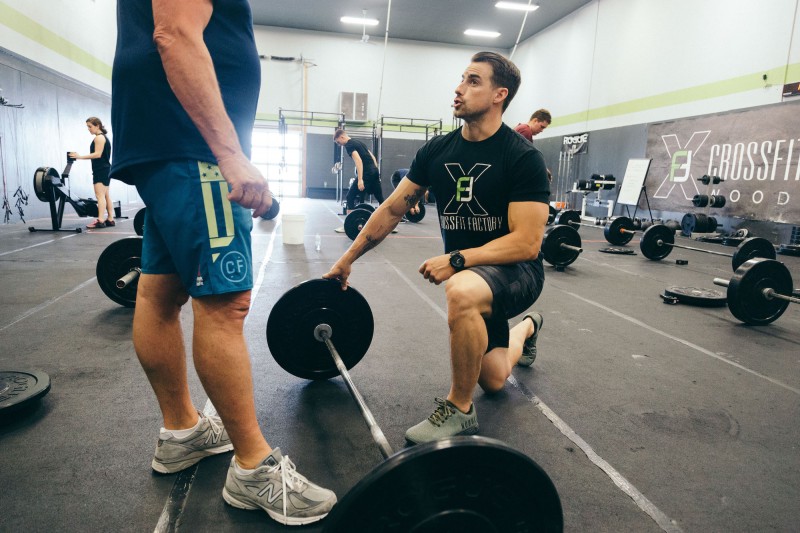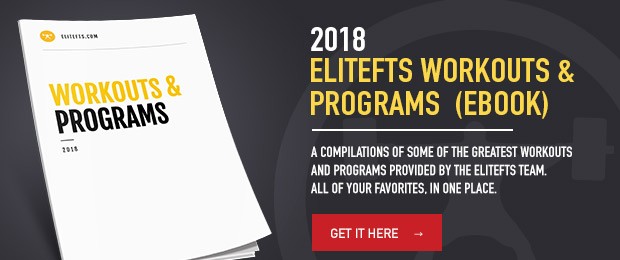
Over the last 10 years we've experimented with linear periodization in a group setting, but always found more drawbacks than benefits — not to mention the results have paled in comparison to using conjugate periodization. I'm not saying linear periodization will not work; I believe anything will work, but there is a long list of variables to consider before deciding the best course of action regarding your approach to program design. Additionally, I'm biased now because of my experience and success with myself and tens of thousands of athletes worldwide who use my programming. My bias revolves around concurrent training, in which the conjugate system provides the framework of all of our programming, regardless of the client's goals. Moreover, I am talking specifically about programming that is delivered to a group of general population athletes who attend a local box or strength and conditioning facility. Linear periodization has its place, and I've used it with varying levels of success, but overall there are simply too many drawbacks when used for group programming.
Within group programming, there are many variables to consider, the first one being that we have little control over our clients' schedules and lives outside the gym. This is a major difference from a client that you train one-on-one, where you are in complete control of the programming you deliver to them. You know when they last trained and what they did; you can have intimate conversations about how their diet has been and what their sleep has been like. More importantly, you have a small glimpse into the stressors of their lives and their psychological profile. Some coaches may even go as far as tracking their client's heart rate variability. If you do this already, kudos to you. If you do not use this tool with your personal training clients, I'd recommend you look more into it, as this can totally revolutionize your approach and their results. All of these things can be game-changers for determining the best approach for this client. In the group setting, we simply are not afforded the same level of detail.

Secondly, your group clients' experience levels vary. We have athletes that have never worked out a day in their lives and will respond to just about anything you give them. On the other hand, some of your clients may be seasoned athletes, with a higher training age that require more variance to progress. And, of course, most of your athletes will fall somewhere in the middle. Third, we may be privy to individual limiting factors, injuries, and athletic history, but keeping track of 10 to 20 people in a group spread out across five to seven classes may be very tough. Lastly, we have new athletes enter our group all the time, which makes running some type of linear cycle even less practical and can create quite a bit of confusion, as most simply won't understand percentages yet. With all of that considered, does it really make sense to run a cycle geared toward improving a specific quality, when we aren't afforded the necessary prerequisite information beforehand that will more or less determine whether or not a linear cycle is prudent?
Additional Potential Linear Periodization Drawbacks
Often times in an effort to develop one quality, you neglect other areas of fitness. For example, it's not uncommon to see losses in maximal strength when strength-endurance is targeted. Similarly, when power development is targeted, it's not uncommon to see losses in muscular hypertrophy. The list goes on. Accommodation to the same movements, for most, will occur at different rates, meaning the point at which you begin to accommodate to the same movement pattern is the same point at which you start to go backward with your progress. This is why I'm a big fan of rotating variations for max effort and dynamic effort regularly. Overuse injury can be more prevalent. It's not unreasonable to think that if you're performing the same movement patterns every week with increasing levels of intensity that you will inevitably compensate, exacerbating faulty motor patterns thereby increasing the risk of injury.
The overall success of your cycle is highly dependent on consistency, so if your athletes miss a week for whatever reason (which is quite common with group classes), the results can be significantly different. Performing the same movements week in and week out is downright boring. Percentages do not take into account individual muscle-fiber break down. Performing two sets of two with 90% of one-rep max for some of your endurance athletes may be relatively smooth, whereas your fast-twitch and explosive athletes will have a difficult time performing doubles (even for two sets) with 90%.
The Alternative
After over 10 years of experimentation, giving multiple schools of thought a chance with group programming, the most success, consistency, and lowest injury rates have been derived from using a set template with the conjugate method, delivering concurrent fitness year-round to our group athletes. This works well because all of the aforementioned drawbacks with group programming are accounted for. Your athletes don't have to worry about getting stale with the same movements and hitting plateaus. They also don't have to worry that if they are out of the gym for the week they will miss out on all the gains.
This system is consistent in that template does not change, which ensures proper separation of intensity and movement patterns. Context, however, can vary quite a bit, as variation is an instrumental part of the system and the reasons it is so successful. Additionally, if a new athlete comes from another facility, you don't have to worry about them entering a cycle that you may be halfway through. They'll be able to hit the ground running.
Here is a quick overview of the template we use:
Monday
- Max Effort Lower Body Movement
- Anaerobic Conditioning Piece (Lactic or Alactic)
- Accessory Work
Tuesday
- Dynamic Effort Upper or Repetition Upper Body Work
- Aerobic Power Conditioning Work
- Accessory Work
Wednesday
- Low Skill GPP Work or Special Exercise Work
- Skill Development Work
- Zone 1-3 Aerobic Power Work
Thursday
- Dynamic Effort Lower Body
- Anaerobic Conditioning Piece (Lactic or Alactic)
- Accessory Work
Friday
- Max Effort Upper Body
- GPP-Based Conditioning or Aerobic Power
- Accessory Work
Saturday
- Partner or Team Conditioning (Energy system varies based on intensity load from each microcycle)
Sunday (Optional)
- Total Body Training
The overarching goal is to provide well-rounded fitness 365 days a year to your group athletes. Keep in mind that we are not trying to transform anyone into a powerlifter, Olympic lifter, endurance athlete, or bodybuilder with this approach. We are simply helping our athletes become better versions of themselves while simultaneously improving the quality of their lives, but don't be fooled: this approach is capable of delivering consistent results to your athletes where they'll be able to break lifetime personal records yet avoid feeling beat up or rundown.












Do you have a program for purchase that would a blend of this and your “The Best Conjugate Plan”. I’m really liking your ideas and would like to do something that keeps the Olympic lifts while also utilizing ME, DE and RE methods. And cuts out the extraneous Crossfit lifts that cause injury.